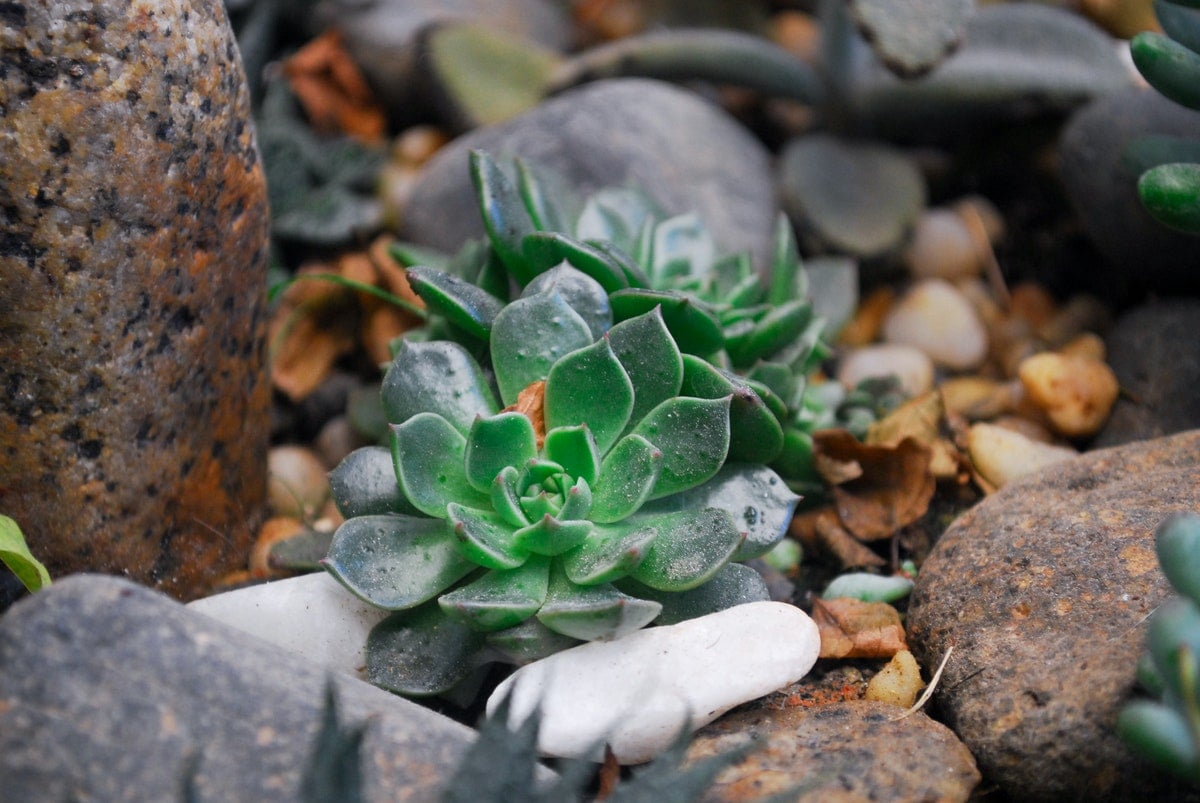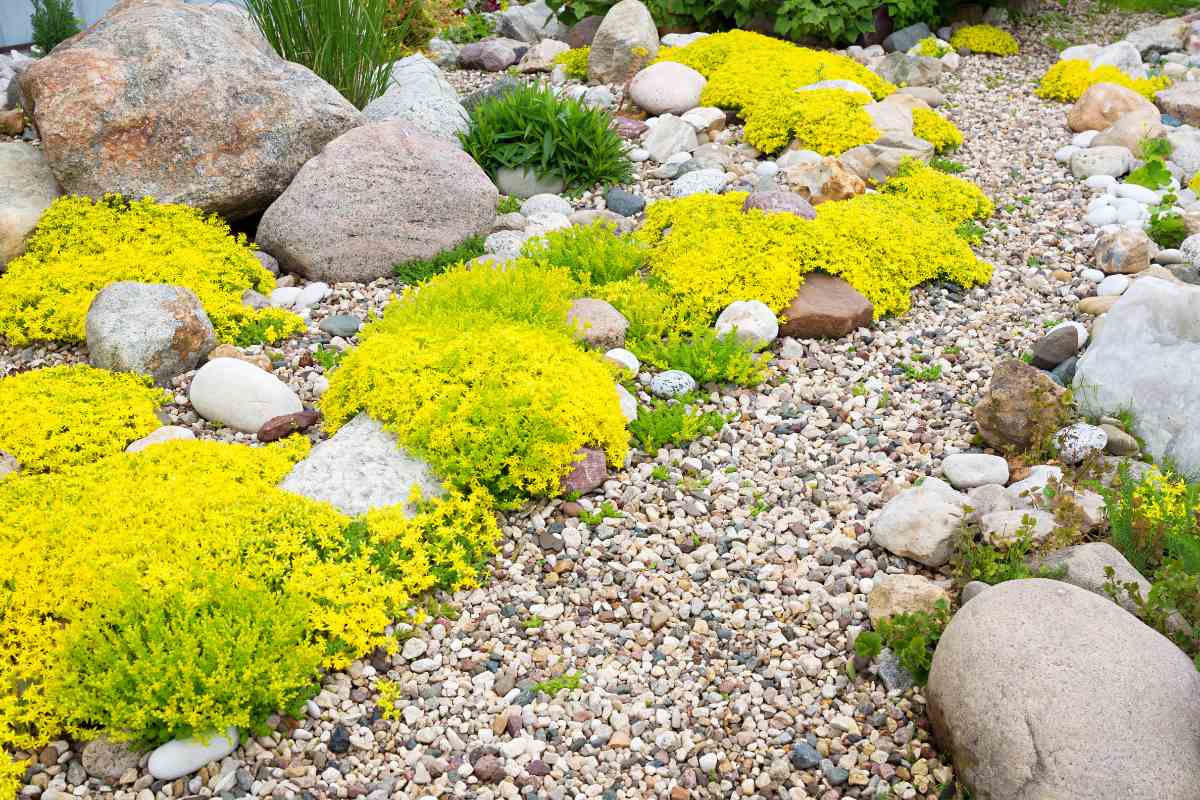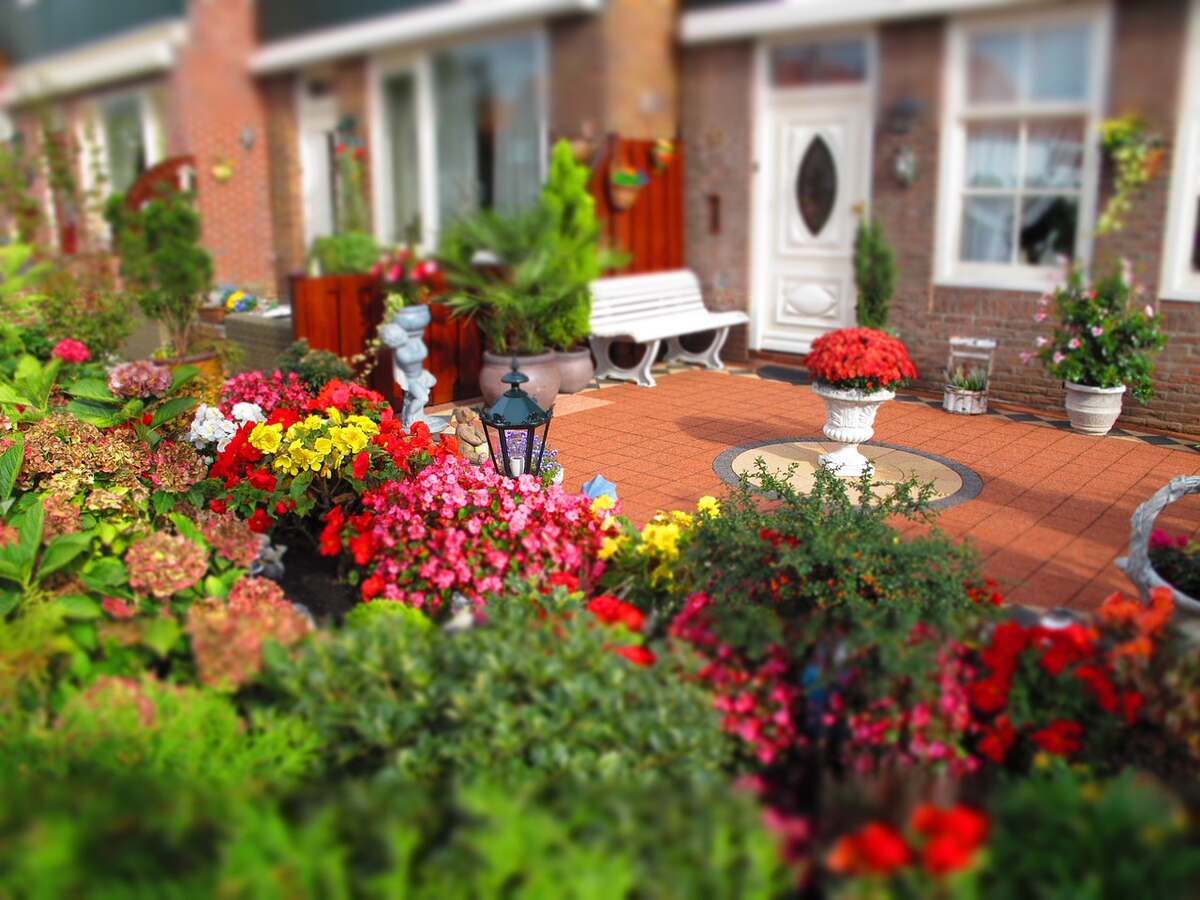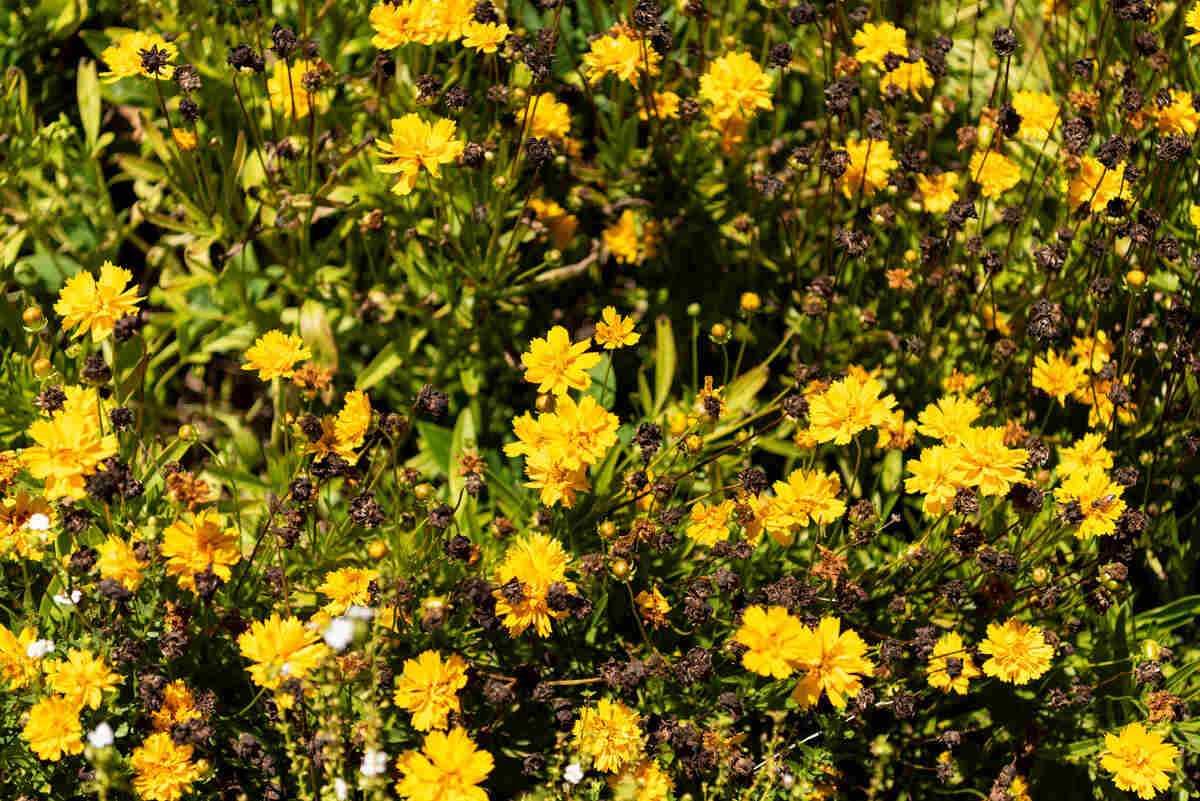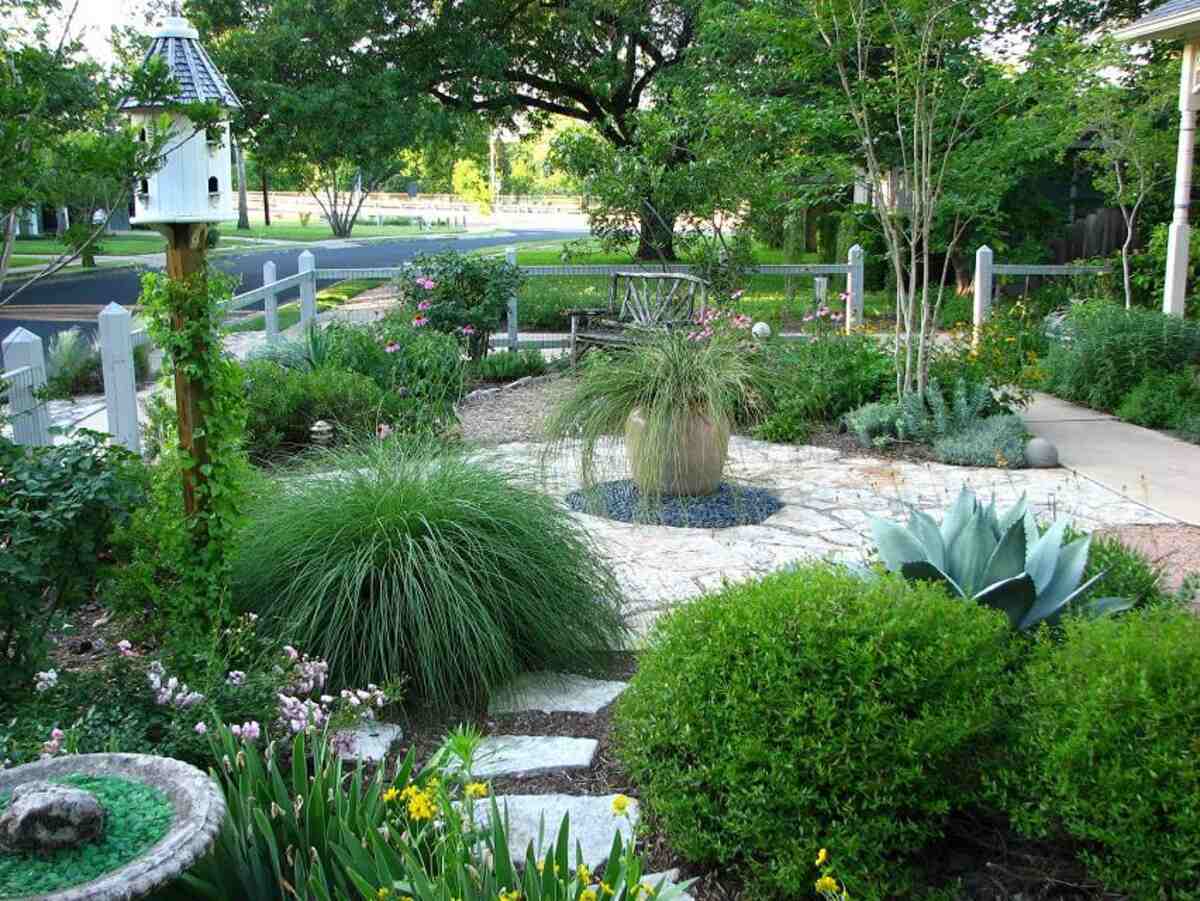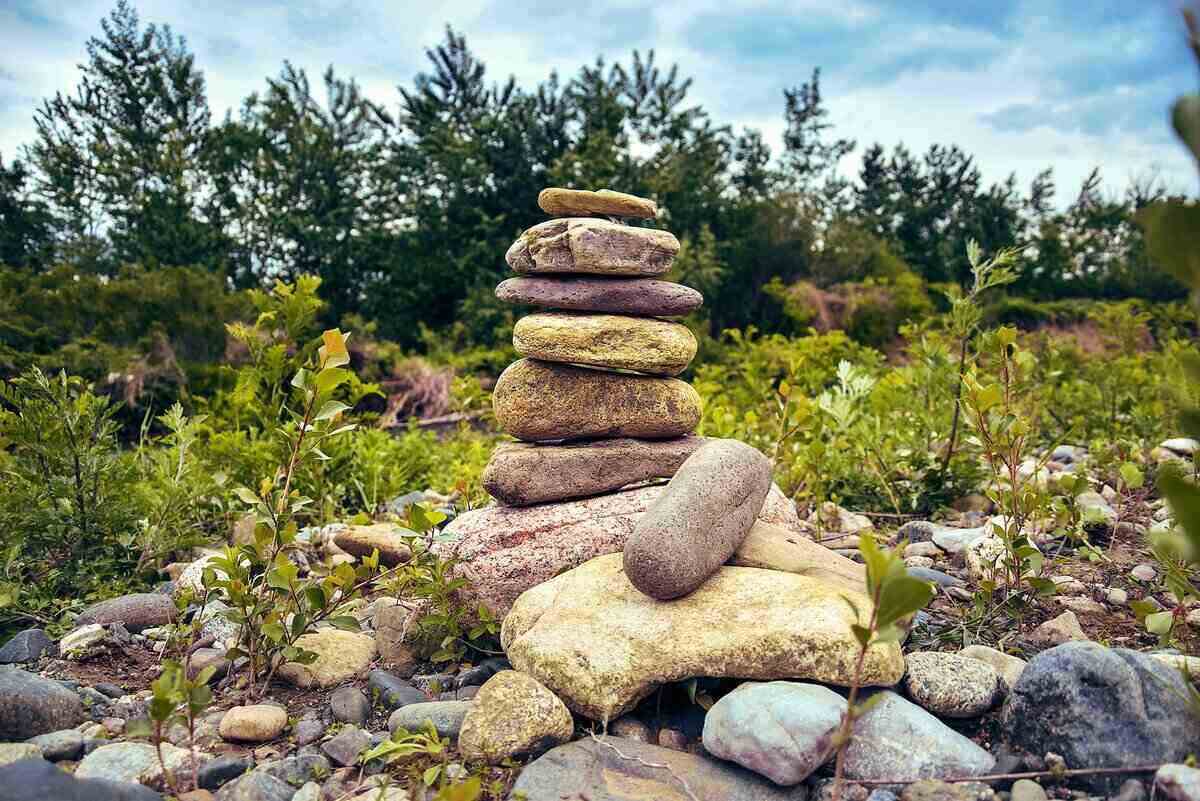
Landscaping with boulders has become a trendy way for homeowners to add curb appeal to their yards. Big rocks can be tucked into garden beds or used on their own as eye-catching focal points.
The reasons for the trend: Boulders offer a natural way to bring color and character to your landscape, while also being low-maintenance or completely maintenance-free.
Landscaping is an art form that uses all sorts of natural mediums to turn a yard into a thing of beauty. That includes really big rocks.
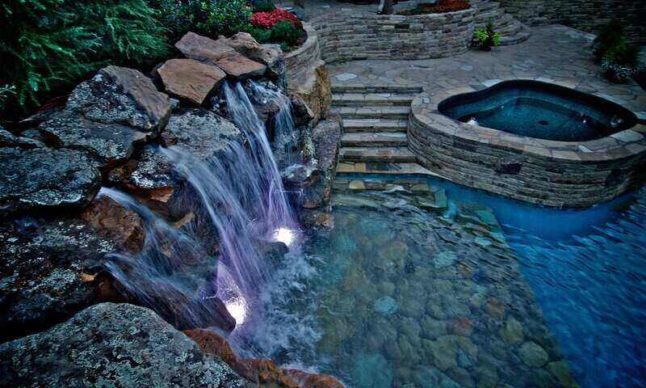
Here is what you need to know about landscaping with big rocks and some ideas for how to incorporate boulders in your front yard, backyard, or water features.
7 Ways to Landscape with Boulders
1. Group Boulders in Clusters
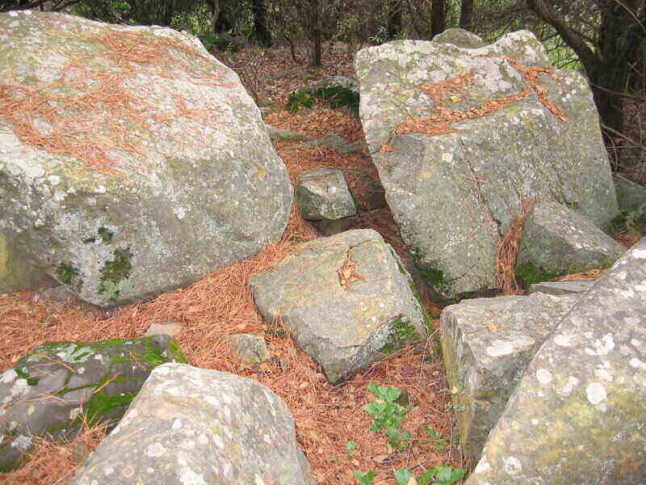
Try gathering boulders in groups, such as a rock wall for a fountain and pool.
When placing boulders in your yard, think of what you’re creating as a rock garden on a large scale.
- Cluster three or more boulders: This tends to make for a more interesting and eye-catching landscaping element than a single rock.
- Boulders are rarely found alone in the wild: Grouping them together gives a more natural look.
2. Arrange or Position Boulders Strategically
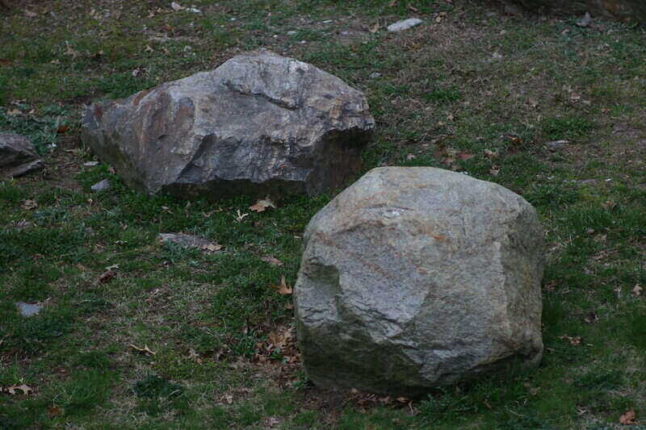
Instead of just dropping a big rock down in the most obvious way, try unique ways of positioning your large stones.
For example, boulders are sometimes found in what’s known as a “vertical” position where they sit taller than they do wide.
Using some ground cover around a well-positioned rock can make for an eye-popping focal point. Think of a boulder as the star of the show with the rest of your design being the supporting cast.
3. Set Your Boulders in the Ground
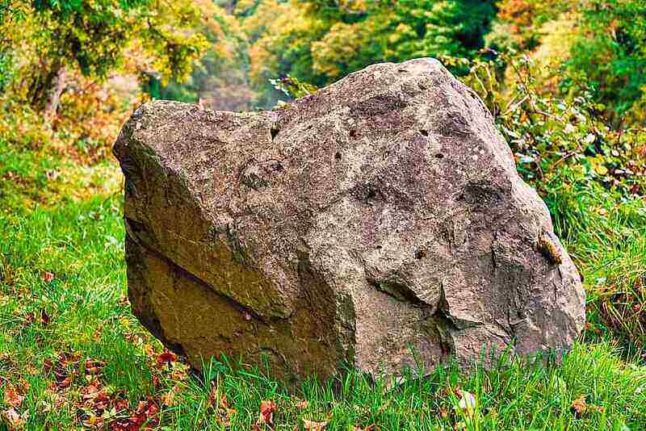
Boulders should always be partially buried and set at least a few inches below the grade. But they can bring a different aesthetic when buried more than halfway underground.
If you have a boulder with a large, flat side, consider leaving just that side exposed for an interesting element to a garden bed. This makes the boulder look like it has been there forever.
4. Surround Boulders With Gravel
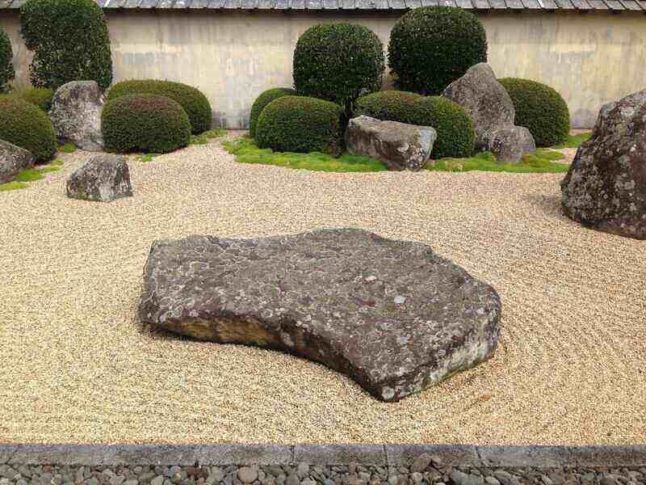
A mix of rocks in various sizes is both attractive and functional. Small rocks not only work with the natural look of landscaping with rocks, but they also help to prevent the large boulders from settling or shifting out of place.
Think of the gravel as the natural mulch for your zen garden or flower bed.
5. Use Boulders in Levels or as Steps
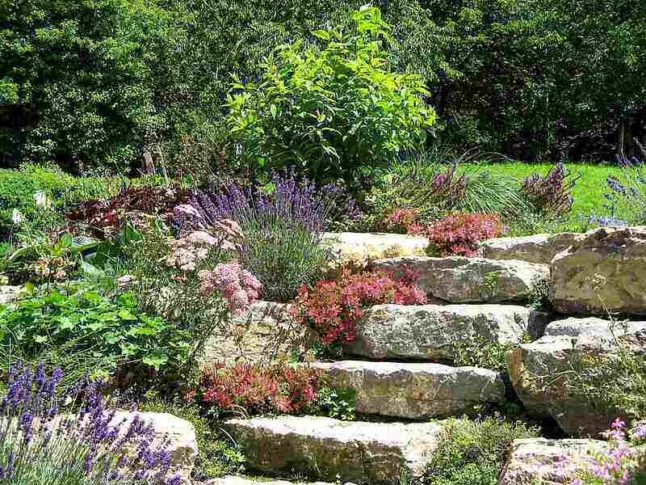
Boulders are a great tool for accenting or creating changes in elevation. Let the placement of your boulders flow with the shape of your yard to make them look like they belong there.
6. Stack Boulders to Form a Retaining Wall
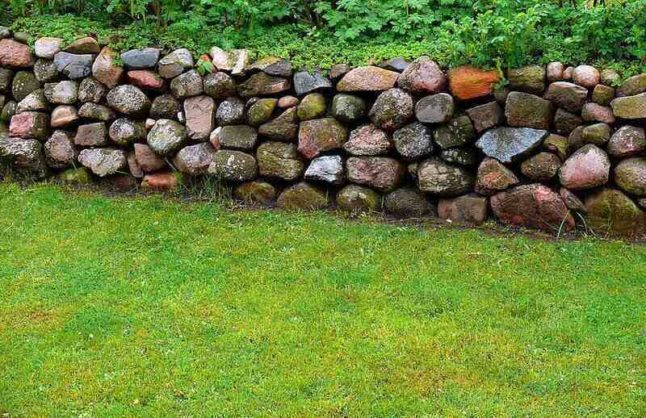
Boulders also make attractive, natural-looking retaining walls. And a boulder wall is durable. Where a fence might be blown down in a strong wind a rock wall will stay in place.
7. Light Up Your Boulders
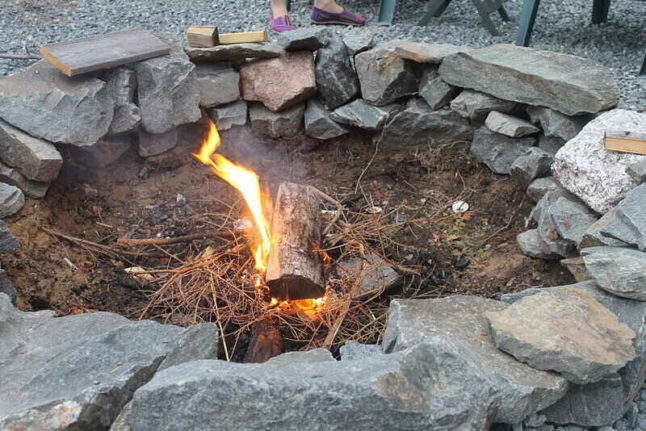
A great way to keep the curb appeal of your landscaping boulders throughout the night is to use landscape lighting. Point the lights at your front yard boulders in interesting ways to highlight their shape and texture.
Or… use boulders as a base for your fire pit to let the flames’ natural light bounce off the boulders while you warm your hands and toes on your backyard patio.
What You Need to Know About Landscaping with Boulders
What are Landscape Boulders?
In geology, a boulder is any rock larger than 10 inches in diameter. That covers a wide range from small enough to carry to big enough that you will need a crane to move it.
Although no two boulders are the same, the shape of a boulder is categorized as either round or angular.
- Round boulders are smooth and water-worn
- Angular boulders have jagged edges and flat surfaces.
Which Rocks Should you use for Landscaping?
The type of rock you choose will depend on:
- How your boulders will be used
- What aesthetic you’re going for in your yard
- Cost comes down to what you are willing to spend on them
The type of rock itself will be less important than the look you’re seeking.
As with any good landscape design, color is often a coveted feature when landscaping with boulders.
Big rocks come in all sorts of colors from unique pinks, blues, and greens to more natural stone browns, golds, whites, and grays.
Choosing local rocks will typically ensure that you can keep costs down while also staying true to the authentic colors of your region.
How Do You Landscape With Boulders?
As with any DIY landscaping project, there are no hard and fast rules for rock landscaping. It’s your property, so you can design your outdoor space in whatever beautiful way you desire.
That being said, professional landscapers can offer some helpful tips for landscaping with boulders.
Start with a Plan
Boulders can be very difficult to move, so know where you’re going with them before you start moving those big rocks. If the boulders are going in your front yard, they likely will be much easier to place than if they need to be hauled to the backyard.
Figure out where you want to set your boulders and what position you will put them in ahead of time to avoid any heavy mistakes.
Pick the Right Color
The “right color” of boulder or boulders will depend on the existing landscape of your home or the ideas you have for your yard project.
Consider any existing hardscapes. Does your garden design include smaller rocks like basalt or river rocks?
Do you have pavers or stepping-stone walkways? If so, you’ll want to pick a color for your larger boulders that matches the other natural rock colors in your yard.
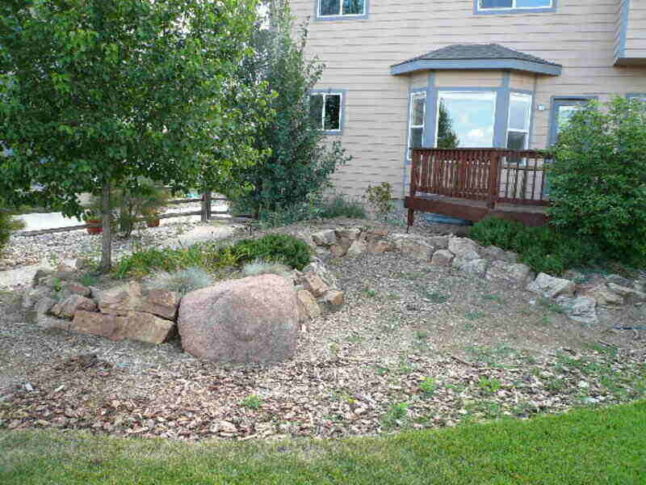
Size Matters
Don’t be afraid to go big with your boulders!
Depending on the size of the space that you want them to occupy, boulders that are too small can become dwarfed by their surroundings once placed in your landscape.
Don’t forget that boulders will lose some size when they are buried.
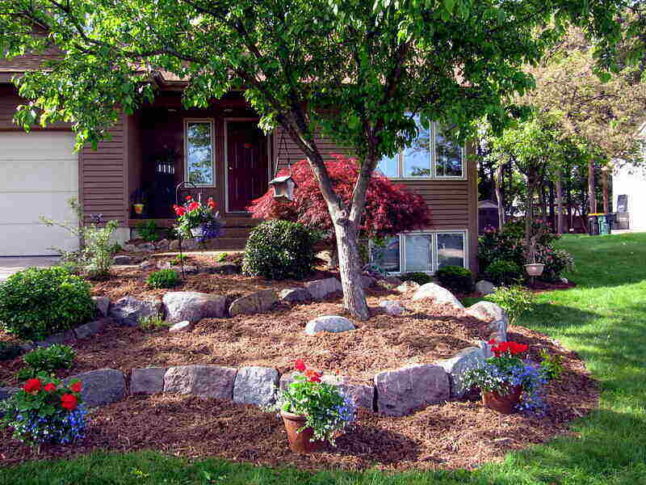
How to Move Boulders
Large boulders typically require the use of a crane or a forklift for installation. Smaller boulders can be moved using a dolly.
If you just need to adjust the position of a boulder, you may be able to shift it using a strong stick and a fulcrum as a lever. However, if you move a big rock, be careful.
The process to move boulders will vary with each project, but here are a few tools a homeowner may need:
- Pry bar
- Fulcrum
- Nylon straps
- Ratchet or hoist
- Strong planks or pipes
- Wheelbarrow or wheeled rock mover
- Mechanical crane or backhoe
FAQ About Landscaping With Boulders
Landscapers typically recommend:
• Placing boulders in clusters
• Slightly or mostly buried
• Positioned in interesting ways
Ultimately, the way you place your landscaping boulders is up to you and your preferences. Choose from the design ideas above or create your own. Follow our tips for the perfect rock landscape.
You can make your own lookalike boulders out of simple materials like plywood, wire, and fast-acting cement. Or, you can go to your hardware store and buy a fake boulder.
Tall spiky succulents such as columnar cacti and yuccas provide contrast. Shade tolerant plants are a good choice to use around a boulder’s base.
If you’re going the extra mile to install a water feature, you can incorporate water-based plants and fish like koi.
Stone boulder costs range from $100 per ton to $600 per ton on average.
Prices for landscaping boulders vary widely depending on the type of rock, its size, and where it’s coming from. More boulders means more cost.
A sandstone boulder typically weighs about 150 pounds per cubic foot. A perfectly round sandstone boulder with a 3-foot diameter weighs approximately 2,120 pounds. Limestone and granite are a bit heavier at 175 pounds per cubic foot.
Here’s how to calculate the example weight for a spherical, 3-foot diameter boulder:
• The volume for the sphere of a circle is: V=4/3r(cubed)
• The radius is 1.5 feet, so V=14.13
• V=14.13*150=2,119.50 pounds
A perfectly round sandstone boulder with a 3-foot diameter weighs approximately 2,120 pounds.
Yes. Landscape fabric under the layer of pebbles and gravel can prevent weeds from rooting in the soil. It will also prevent your rocks from sinking into wet soil and keep everything where you want it.
For stability and weed blocking under rock or gravel, non-woven landscape fabrics work best.
When to Call a Landscaping Professional
Working with thousands of pounds of large rocks can be a weighty endeavor and will likely require machinery that you don’t have.
Professional landscapers also can advise you on making the right aesthetic decisions, like what color boulders to use or where to put those big rocks. Their training gives them an eye for design that could be the difference between landscaping that you love and a giant, heavy — and regrettable — design decision.
Landscaping boulders are heavy. If you’re planning to use large boulders for your project, you’ll need some help. Call a landscaping professional near you for assistance with your landscaping boulder installation.
Main Image Credit: Pxhere / CC0 Public Domain
